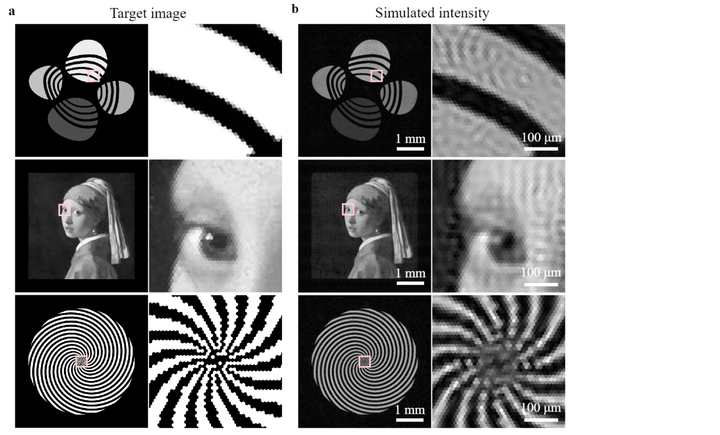Hexagonal diffractive optical elements

Abstract
Diffractive optical elements (DOEs) have widespread applications in optics, ranging from point spread function engineering to holographic display. Conventionally, DOE design relies on Cartesian simulation grids, resulting in square features in the final design. Unfortunately, Cartesian grids provide an anisotropic sampling of the plane, and the resulting square features can be challenging to fabricate with high fidelity using methods such as photolithography. To address these limitations, we explore the use of hexagonal grids as a new grid structure for DOE design and fabrication. In this study, we demonstrate wave propagation simulation using an efficient hexagonal coordinate system and compare simulation accuracy with the standard Cartesian sampling scheme. Additionally, we have implemented algorithms for the inverse DOE design. The resulting hexagonal DOEs, encoded with wavefront information for holograms, are fabricated and experimentally compared to their Cartesian counterparts. Our findings indicate that employing hexagonal grids enhances holographic imaging quality. The exploration of new grid structures holds significant potential for advancing optical technology across various domains, including imaging, microscopy, photography, lighting, and virtual reality.